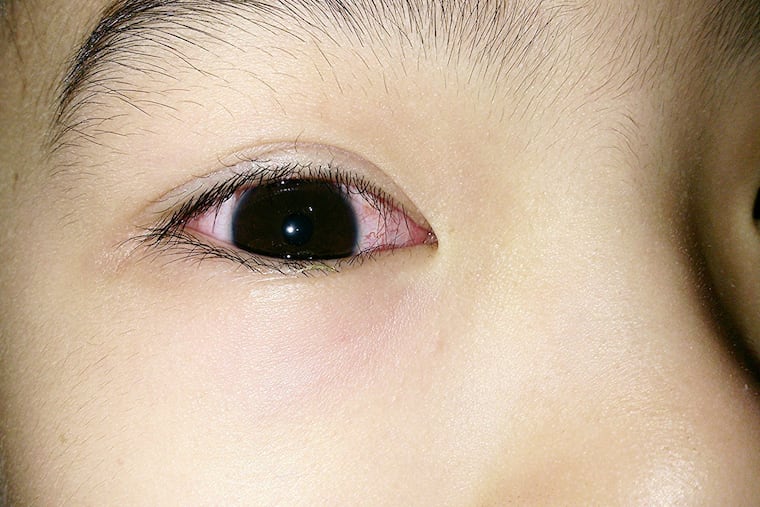A case of pink eye took a mysterious path when a Philly pediatrician looked again
For this family, the treatment was a lot more complicated than just picking up allergy drops from their pharmacy.

Between COVID-19 evaluations and testing, along with the typical wintertime asthma exacerbations and other respiratory viral infections, our outpatient clinic was exceptionally busy one day earlier this year.
All of our exam rooms were filled as I rushed to see a patient with what seemed to be an easy and common concern: pink eye.
She was a previously healthy 5-year-old girl whose mother noticed that her eyes had been mildly red for the last two weeks. She didn’t have a fever in all that time. Her eyes were teary and a little itchy, but not painful. Her mother put some cool compresses on her eyes in an attempt to lessen the redness, but hadn’t tried any medicines such as eye drops.
There were no new environmental exposures, such as secondhand smoke or pets, and there was no one else in the family with similar symptoms. Neither the mother nor the child seemed very concerned about her symptoms, and neither was I.
Even before examining the little girl, I asked which pharmacy they preferred, convinced that allergy eye drops would take care of this common presentation of allergic conjunctivitis and I could move on to the next exam room.
To be certain it was just allergies causing her reddish eyes, I grabbed an ophthalmoscope to get an even closer look at her eyes. I noticed a subtle finding that would lead this family down a much more complicated path than just picking up allergy drops from their pharmacy.
Solution
In all eyes, there is a tiny area adjacent to the iris (the part of the eye that has color to it) called the limbus, which is avascular — meaning it has no blood vessels in it, unlike the rest of the eye.
The conjunctiva is the covering of the entire outer eye. When there is conjunctivitis (“pink eye”), usually most of the eye is pink, including the limbus. Conjunctivitis is usually caused by either a viral or bacterial infection of the eye that may be produced by trauma or environmental irritation.
But this little patient’s limbus was spared of redness — a situation we call limbic sparing — which usually implies that there may be a more systemic disease or a more uncommon infection.
These may include autoimmune diseases such as systemic lupus, juvenile arthritis, sarcoidosis, and inflammatory bowel disease. Limbic sparing is a classic finding in Kawasaki disease, which has children getting high fevers, rashes, swollen hands and lips, and even heart damage. Luckily, she had none of these other symptoms.
Certain childhood cancers can also have this effect, but again, she had no symptoms to suggest this.
Chicken pox, tuberculosis, and various herpes infections can also cause inflammation in the eye and spare the limbus.
But in most cases, there is no identifiable cause for limbic sparing.
Our pediatric ophthalmologist saw her within an hour and found that she had anterior uveitis, which is inflammation of the middle layer of the eye. Blood tests showed that she had four times the normal level of inflammation in her body, pointing to a more systemic disease.
No matter the cause, untreated uveitis is one of the leading causes of blindness in America. She was put on topical steroids and eye drops to calm down the inflammation of the uvea, and the eye doctor is following her weekly to come up with a definitive diagnosis.
But a workup for the more serious diseases, such as autoimmune conditions and cancer, came up negative, and she continues to feel fine, all of which suggests she is in the majority with no identifiable cause, also known as idiopathic disease.
Who would have thought that the absence of redness in a 0.93 millimeter portion of the eye could lead down such a complicated path? The good news, though, is that her eyesight is unaffected, and we are optimistic that she’ll make a full recovery.
Daniel R. Taylor is medical director of the outpatient center at St. Christopher’s Hospital for Children.